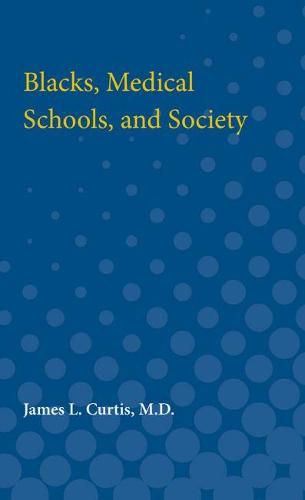Readings Newsletter
Become a Readings Member to make your shopping experience even easier.
Sign in or sign up for free!
You’re not far away from qualifying for FREE standard shipping within Australia
You’ve qualified for FREE standard shipping within Australia
The cart is loading…






One American in 560 becomes a doctor … Only one black American in 3800 does. Why? The answers and what can be done about them are presented in this succinct and important book by Dr. James L. Curtis. Blacks, Medical Schools, and Society provides an insightful history of the black physician in America from colonial times to the present as well as an incisive analysis of contemporary trends and future prospects in black medical education. Examining high school programs and premedical workshops such as the Cornell Medical School-Hampton Institute collaboration, the author evaluates the impact of current approaches and suggests practical steps to increase the quality and quantity of trained black doctors and dentists. At a time when physicians are in short supply, and when for the first time more than half of the country’s black medical students are attending predominantly white schools, this book offers a significant and straightforward commentary on the medical practices of a multiracial society.
$9.00 standard shipping within Australia
FREE standard shipping within Australia for orders over $100.00
Express & International shipping calculated at checkout
One American in 560 becomes a doctor … Only one black American in 3800 does. Why? The answers and what can be done about them are presented in this succinct and important book by Dr. James L. Curtis. Blacks, Medical Schools, and Society provides an insightful history of the black physician in America from colonial times to the present as well as an incisive analysis of contemporary trends and future prospects in black medical education. Examining high school programs and premedical workshops such as the Cornell Medical School-Hampton Institute collaboration, the author evaluates the impact of current approaches and suggests practical steps to increase the quality and quantity of trained black doctors and dentists. At a time when physicians are in short supply, and when for the first time more than half of the country’s black medical students are attending predominantly white schools, this book offers a significant and straightforward commentary on the medical practices of a multiracial society.